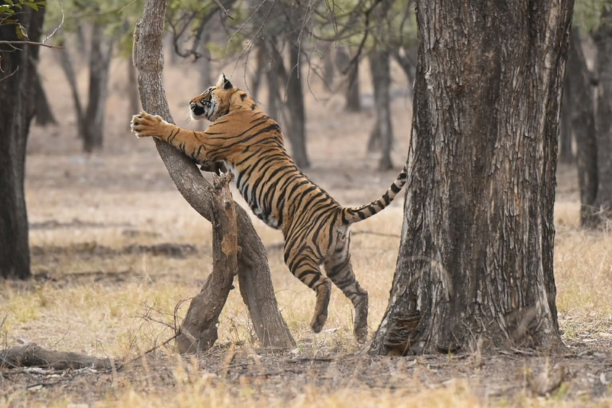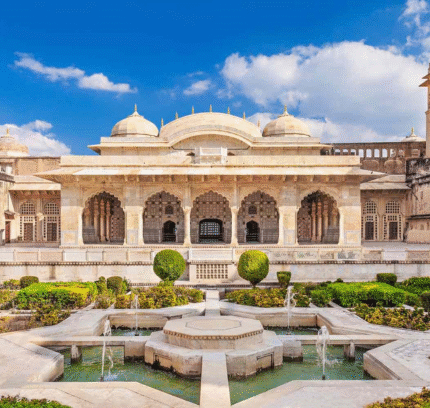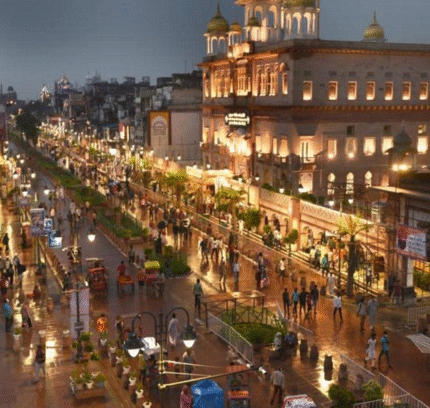Day 2
Delhi
After Breakfast. Full Day visit Old and New Delhi:
We will begin our first visit to the magical country of India, we will begin touring New Delhi and its main monuments, among others:
Qutab Minar, a monument begun in 1193, marks the first place where the first Muslim kingdom was established in North India. This five-seater tower of victory was started by Qutbuddin Aibak and completed by his successor Iltutmish. It was built to symbolize the supremacy of Islam; Humayun’s Tomb, built by the eldest of his widows and mother of Emperor Akbar. This is the earliest example of Mughal architecture in India. It is believed that this mausoleum was what inspired Shah Jahan to build the Taj Mahal.
New Delhi shines with its splendor, like a lone sentinel guarding the outpost of a bygone empire. It is a wealthy city, with ceremonious gardens, the magnificent Parliament Building and the Rashtrapati Bhawan, the official residence of the President of India.
l legacy, it was originally called Masjid-i-Jahanuma, which means “commanding a world view mosque”.
In complete contrast to the noise and The Raj ghat (royal courtyard) is a memorial to the Hindu Mahatma Gandhi, the main architect of India’s independence.
We then walk through the Red Fort, built in the mid 17th century, also by Shah Jahan, which was sacked by Nadir Shah’s marauding army and later by British soldiers.
Qutab Minar, a monument begun in 1193, marks the first place where the first Muslim kingdom was established in North India. This five-seater tower of victory was started by Qutbuddin Aibak and completed by his successor Iltutmish. It was built to symbolize the supremacy of Islam; Humayun’s Tomb, built by the eldest of his widows and mother of Emperor Akbar. This is the earliest example of Mughal architecture in India. It is believed that this mausoleum was what inspired Shah Jahan to build the Taj Mahal.
New Delhi shines with its splendor, like a lone sentinel guarding the outpost of a bygone empire. It is a wealthy city, with ceremonious gardens, the magnificent Parliament Building and the Rashtrapati Bhawan, the official residence of the President of India.
We then visit the India Gate, originally called the All Indian Wars Memorial is a monument built by architect Edwin Lutyens to commemorate Indian soldiers who died in World War I and the 1919 Afghan Wars. It was laid on February 10, 1921 by the Duke of Connaught. The names of the soldiers who died in these wars are inscribed on the walls of the monument. Its construction was completed in 1931. Since 1971, an eternal flame, known as Amar Jawan Jyoti (the flame of the immortal warrior), has been under the monument since 1971, marking the “Tomb of the Unknown Soldier” and is dedicated to honoring the unknown soldiers killed in the clashes between India and Pakistan that took place that same year. Overnight at hotel.
We then visit the India Gate, originally called the All Indian Wars Memorial is a monument built by architect Edwin Lutyens to commemorate Indian soldiers who died in World War I and the 1919 Afghan Wars. It was laid on February 10, 1921 by the Duke of Connaught. The names of the soldiers who died in these wars are inscribed on the walls of the monument. Its construction was completed in 1931. Since 1971, an eternal flame, known as Amar Jawan Jyoti (the flame of the immortal warrior), has been under the monument since 1971, marking the “Tomb of the Unknown Soldier” and is dedicated to honoring the unknown soldiers killed in the clashes between India and Pakistan that took place that same year.
Old Delhi came into prominence when Shah Jahan moved his capital from Agra to Delhi. We visited the 300 year old Chandni Chowk Market which is a maze of alleyways lined with shops selling an extraordinary variety of items, food, noise and crowds are an essential part of any Indian market. We walk through this market by rickshaw.
From here we will continue to the Jama Masjid or Friday Mosque. This is the largest mosque in India designed by Shah Jahan, and was his last architectural legacy, it was originally called Masjid-i-Jahanuma, which means “commanding a world view mosque”.
In complete contrast to the noise and The Raj ghat (royal courtyard) is a memorial to the Hindu Mahatma Gandhi, the main architect of India’s independence.
We then walk through the Red Fort, built in the mid 17th century, also by Shah Jahan, which was sacked by Nadir Shah’s marauding army and later by British soldiers. Overnight at hotel.









Reviews
There are no reviews yet.